So you like TNW? Then join our upcoming online event, TNW2020, you don’t want to miss it.
For the past few months, I’ve noticed an increasing number of designers online complaining about their lack of time to design. They have a packed agenda full of meetings and, if they’re lucky, they have little blocks of an hour of less to design. This is nothing new, I’ve been there. I’ve seen designers complain about this throughout my entire career. I’ve done it too.
I’ve also seen managers trying to address the problem. I’ve had meetings about having too many meetings and, the funniest part is, the outcome of that was spending even more time discussing it in smaller teams, trying to fix the situation.
Sure, managers have their fair share of accountability, after all they’re often the ones booking most of the recurring meetings. But what about designers? Are we just passive victims of a system that’s trying to drown us with meetings?
Of course not. If you don’t have time to design, it’s also your fault.
But I’m not here to point any fingers. As a designer, I don’t like to just find problems, I like to fix them. That’s why I want to share some tips that helped me gain some of my time back from the meetings overlords, and I hope they can help you too.
Block your calendar
Here’s your first mistake:
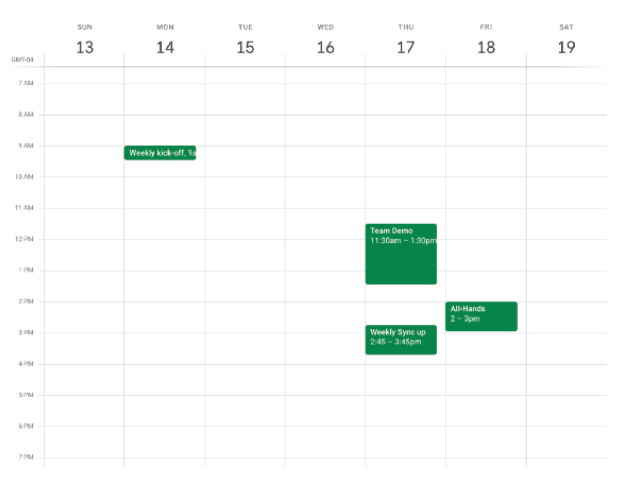
If your calendar for the next month looks something like this, what do you think those empty spaces communicate? It looks like you’re pretty open and I can book anytime I want – and before you know it, your calendar gets packed.
To avoid this you can simply block slots of at least two to four hours where you want to design.
Call it what it is – design time – and be strict. Don’t accept meetings that overlap that time, unless it’s something important and exceptional.
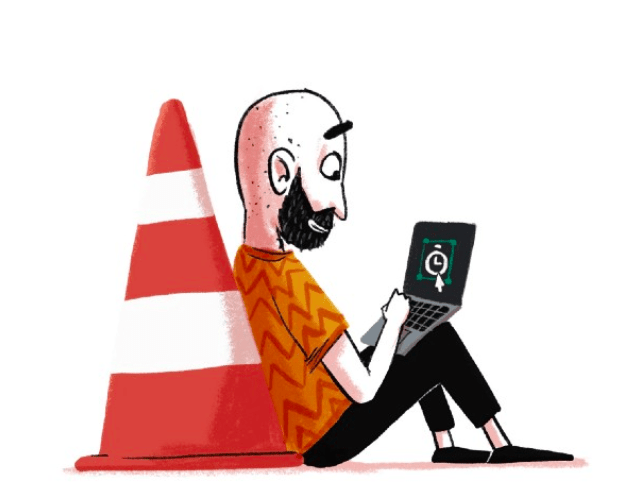
Don’t block your entire calendar though, otherwise, that will give you the same exact result as if it was empty. If people want to book time with you, you should have empty slots that people can use for that, otherwise, they will just see your “design time” as the closest thing to an empty block, and will try their luck.
If you don’t think you can carve such a big block out of any of your days, let me tell you that you definitely can.
At Shopify, Wednesdays are meant to be a meeting-free day. Everyone is encouraged to avoid booking meetings on that day and they also empower you to decline any invite that pops up on a Wednesday.
That mandate comes from our leadership, and I’m really a fan of that. It really shows that this is a company made by makers that understand that people need time to get stuff done.
If Shopify can do this I can’t see why other companies can’t.
You don’t even need to wait for your company, you can always start small and aim to do something like this just within your team.
If your company is set up in a way that you just can’t actually reserve a day or a big chunk of a day to work, at least you can push for it.
Inertia won’t give your time back, and I would be very surprised if someone calls you out for trying to get more work done.
Don’t be afraid to decline meetings
Here’s the thing: I’m pretty sure a company doesn’t want to pay you to have superfluous meetings, at least they shouldn’t.
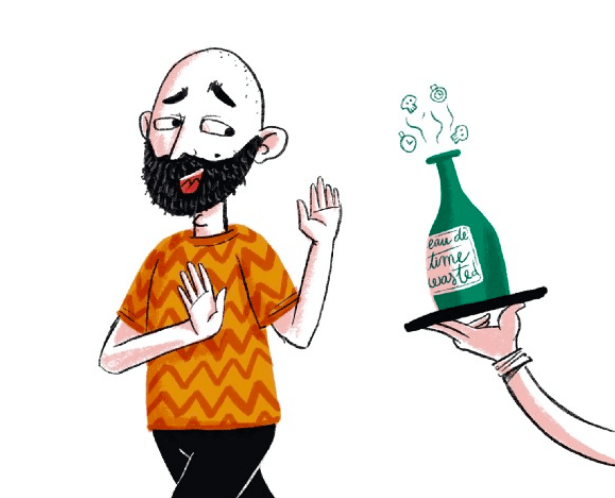
If you decline a meeting because the work you need to do has priority over it, you’re actually doing them a favor. They shouldn’t punish or reprimand you for it.
Unfortunately me saying it doesn’t mean that it doesn’t happen. If your company or lead discourages you from getting work done, in favor of superfluous meetings, maybe you might want to reconsider your working situation, and look for a place or team that cares more about getting stuff done than they care about talking about it.
All this should come with the caveat that you need to make sure that the work you’re doing actually has priority over the meeting you’re declining.
I think it’s easy to put all meetings in the same bucket, but we need to be able to differentiate and understand that the context you gather in a meeting might save you hours of design time.
Propose a new time
Here’s a feature of calendars I don’t see many people using – propose a different time.

It’s a good way to defend your craft time and still try to be present in meetings you don’t want to miss. This might not work so well for meetings with a large group, but for smaller crowds, it’s probably fine, and you can use that as a way to shape what your design time is.
Sometimes, all it takes is delaying a meeting for an hour, and voila, you have a couple of hours of design time with no interruptions.
Respect your time
If you’re booking a meeting and you respect your audience’s time, it’s important that you define the agenda and goal for the meeting and make that part of the invite.
That can help your audience decide whether or not they need to attend.
If you do that, that puts you in a position where you can start requesting for others to do the same. If someone wants to take a slot from your calendar, they should at least put a minor effort in to telling you what that’s all about. If they don’t you can defer to tip two.
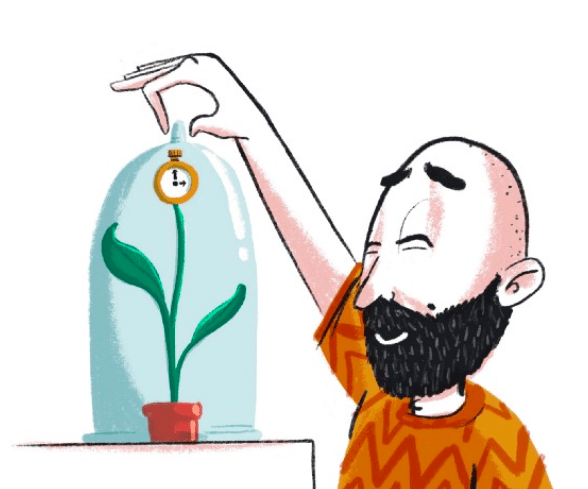
When you actually have meetings, get straight into business.
It’s perfectly normal, and actually nice in the current times, to start a meeting with a bit of an icebreaker. I’m not discouraging that.
What I’m discouraging is spending more than a couple of minutes just chit-chatting. Because the usual consequence of this is meetings that run overtime, and the need for subsequent meetings to continue the discussion.
Not to mention the domino effect that affects all your other meetings if you have a packed day.
In my experience, this often happens when meetings are low stakes. I don’t see it happening as often when you have a high-level stakeholder in the room. Why is that?
Because people respect their time. So ask yourself, why don’t you respect your own?
Same goes for the end of the meeting. If you end early don’t feel like you have to use that time that was left to talk. It’s your time, use it wisely.
Don’t start the day with email or Slack
Don’t start your day by diving straight into Slack, or by tidying up your inbox.
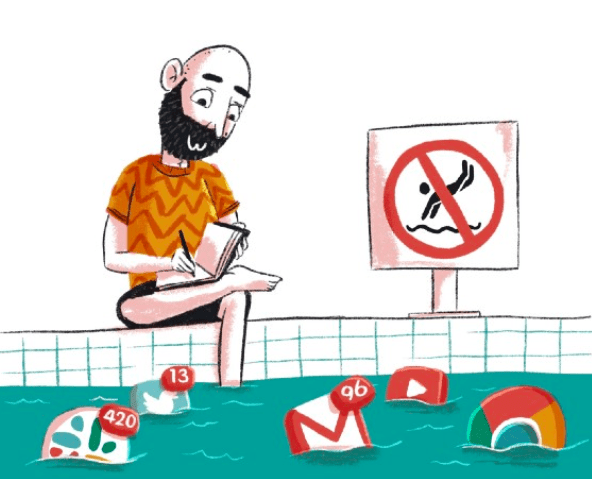
It’s not common for people to book meetings early in the morning, at least in the places where I’ve worked. Take advantage of that and make that your design time.
You can check your Slack messages or email in the short block you might have free during the day. If you have 30min or even an hour in between two meetings, it’s not likely that you’ll be able to make a lot of progress if you start designing something, so use that time for Slack and email instead of the golden hours of the morning.
FOMO? I’ve had days where I was so focused on the work I was doing that I totally forgot to check Slack or my email. Did I miss anything? No.
If there’s something urgent, those things will find you. Just make sure you leave your Slack notifications on for when people mention you.
Take breaks
I know, this one sounds very counter-intuitive. But when you have a day full of meetings and just a couple of hours to work, you might feel tempted to go full-on and not even stop to breathe.

I touched a bit on that in my article “How to design with love”, where I mentioned a study where researchers found that there’s an actual limit to the amount of time that a human being can concentrate on a single task without a break. Apparently that’s less than an hour, so you’re not actually doing yourself or your employer any favors by working for several straight hours without taking a break.
Even if you have a block of just a couple of hours to work, consider taking a break in the middle of it. Sometimes that is exactly what you need to unblock and have a breakthrough.
With that said, I’m not encouraging you to break your flow. If you’re on a roll and you’re plowing through your designs, keep at it. Just be aware of your energy level and try to recognize when you can benefit from a short break.
Don’t default to weekly
We’ve been experimenting with a 4-day work week for the summer at Shopify.
I noticed that this forced people to rethink the way some of the recurring meetings were planned. The default is almost always weekly, but have you ever wondered why?
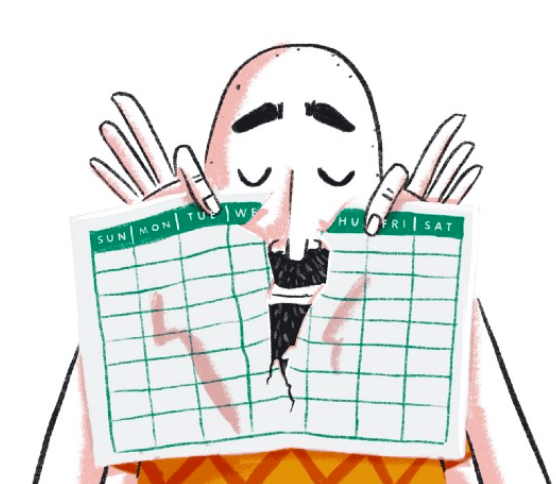
A week is essentially a made up concept, why are we enforcing that cadence?
My experience with weekly meetings is that often you have at least a couple of them and they end up landing on the same weekday, which ends up burning you out and leaving you with no energy for actually getting work done in the remainder of that day.
Can you see how many hours we’re wasting every week?
These meetings are usually for alignment and planning.
To do these things on a bi-weekly cadence you just need to adjust your planning and foster async alignment.
You don’t need to have everyone in a room, every week, to review work if your team is sharing and aligning independently of these recurring events.
Actually, I noticed that having these recurring events sets a pace for sharing, which might not actually be the best for your team. Maybe your project is at a stage where it could move much faster if the team was sharing progress daily, but instead people wait for the weekly critique.
This isn’t just about wasting time, it’s also much more difficult for designers to let go from ideas they were crafting the entire week, as opposed to something they did in a day.
It’s on you!
I don’t know about you, but I can’t design on demand. I have to be in the right mind space and actually have energy and time to make something meaningful.
If you want to do meaningful work, you’re faced with a choice. You can either continue complaining about it and hope someone comes and wipes your calendar clean, or you can take charge and own your time.
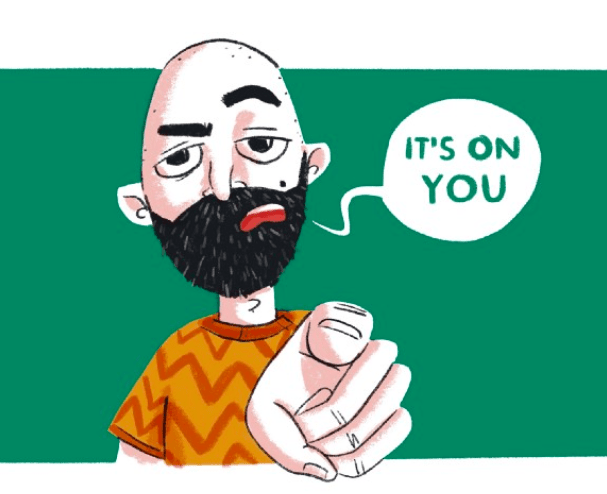
As a designer, your job isn’t just to make things. You need to gather the right amount of context to make those things, and you need to review those things with your peers, if you want to strive and make it better.
All of the above can’t be done properly if you’re not able to manage your own time.
I hope you found these tips helpful – they certainly helped me to get more time to actually design. As a way to conclude this I’ll leave you with one last personal story that hopefully serves as proof that the time is there to be carved out.
Since COVID hit Canada, as many others, I’ve been stuck at home, working and parenting full time. My wife is in the same boat (she’s also a designer), so we had no choice but to adjust our schedules. I spend the mornings with my daughter, which means that I only start to work at 1PM, sometimes 2PM, which ultimately results in 4-ish hours of overlap with my team.
With the help and understanding of my team, and after moving around some of our recurring meetings, we made it work.
We leveraged tools that allowed us to keep the communication going asynchronously, using things like Slack and Figma comments.
One thing that helped me in particular was posting scrappy video demos, running through my designs as a way to share my reasoning and to get feedback from my peers.
All of the sudden half of my week was automatically meeting free, and sometimes we even leveraged this as a way to keep the designs progressing. I would sync up with a designer and pick up the design exploration where she left off, and then before I signed off I would leave a few comments over my designs so she could come back to it the next morning.
It takes a bit of effort, but if you’re willing to take action, you can definitely make it work.
This article was written by José Torre and originally published on UX Collective. You can read it here.
Get the TNW newsletter
Get the most important tech news in your inbox each week.






